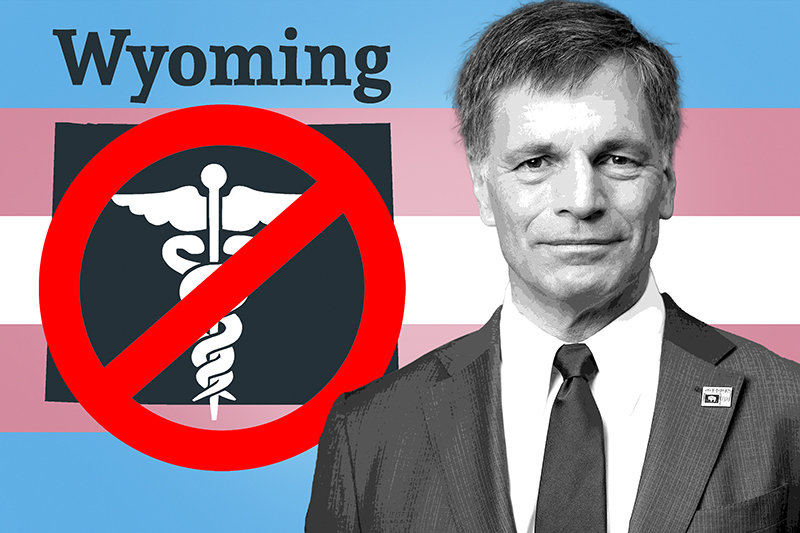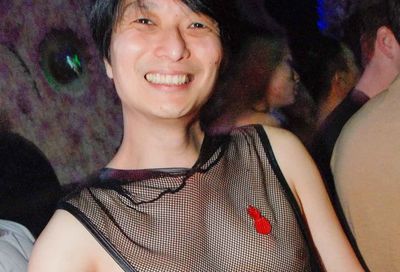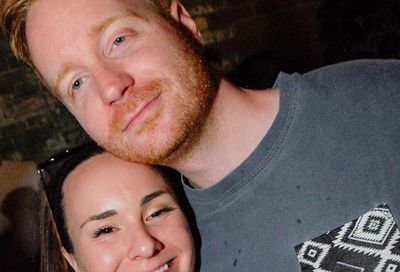Whitman-Walker Opens New Southeast D.C. Health Center
The newly completed Max Robinson Center will allow the community health center to triple its patient capacity east of the Anacostia.

“This is a big day, and we’re here with gratitude and anticipation,” said Naseema Shafi, CEO of Whitman-Walker Health, addressing an audience of several hundred people at a ribbon-cutting for its brand new Southeast D.C. health center on Monday.
Rows of chairs, with a rainbow-colored fan nestled on each seat, were spread across a lawn, dotted with wooden tables shaded by large umbrellas, facing the east side of the health care center.
Three food trucks stood perched on a gravel pathway behind the lawn, their operators eagerly awaiting the potential customers that would eventually come as employees slowly began to trickle out of the building for their lunch breaks.
Named after the late journalist Max Robinson, Jr. — the first Black co-anchor of a national nightly television news broadcast –- Whitman-Walker Health’s new Max Robinson Center, located on the St. Elizabeths East Campus in D.C.’s Congress Heights neighborhood, will serve as a health care and research hub for area residents living east of the Anacostia River.
The new center allows Whitman-Walker Health to triple its patient capacity, allowing the federally qualified community health center to provide primary health, dental, and HIV-specific care to 15,000 patients.
Its predecessor, located on Martin Luther King Jr. Avenue SE, only had the capacity to serve up to 5,000 patients. The building will house over 40 new exam rooms, eight dental suites, six group therapy rooms, and a full psychotherapy suite. It also features a 4,000 square-foot pharmacy on its first floor that is ten times the size of the pharmacy at the previous Max Robinson site.
The center’s location also provides a geographic alternative for Washingtonians who would otherwise be forced to travel 40 to 50 minutes, using public transportation, across town to Whitman-Walker’s 14th Street location to seek out care — creating another obstacle to accessing the HIV-specific or LGBTQ-affirming health care that Whitman-Walker has become best known for over the past 50 years.
“This beautiful building behind me…it’s just a building,” Shafi said, standing in front of an arch of rainbow-colored balloons with the message “We see you” at the crown of the arch. “Key to the success that will happen inside of it are over 330 and counting –- we’re hiring — amazing people who we get to work with every day. They are the heart. They work to improve the health and wellness of District of Columbia residents every day.
“I anticipate more greatness from them because I know what they’re capable of,” Shafi added. “I anticipate that our over 36-year-old research program will expand here to cure HIV. I anticipate the stories and courage of our patients as we build healthier lives and they build healthier lives for their families.
“Whitman-Walker has been in this work for over 50 years, and the Max Robinson Center is the apex for our next 50.”

D.C. Mayor Muriel Bowser, whose administration worked closely with Whitman-Walker Health, developer Redbrick LMD, Davis Construction, and GCS Sigal to create a space for the new health care center, was on hand to cut the first ribbon in celebration of the building’s grand opening.
The project was supported by financing provided by D.C. Housing Enterprise, a subsidiary of the D.C. Housing Authority, through the use of New Markets Tax Credits as part of a larger redevelopment of the St. Elizabeths East Campus.
Since taking office in 2015, Bowser’s administration has invested nearly $900 million in redevelopment efforts, opening a new Entertainment and Sports Arena, a men’s shelter, new condominium and mixed-income rental housing options, and a budding retail space that includes 13 Black-owned local businesses on the campus grounds, with plans to open a full-service hospital in 2025.
“When I came to office in 2015, there had been a lot of promises made to the community about this parcel, and I knew we would have a lot of hard work to do,” Bowser said in her remarks. “We put the first major investment on the campus with the entertainment and sports arena. We knew that investment would lead to other investments.
“When Whitman-Walker decided that it would plant its flag here, we knew that we were on to something, that we would be able to bring world-class, first class, compassionate, focused, expert medical services to our citizens,” she continued. “We know that the work continues for all of us to make sure that we are lowering barriers to health care. The Max Robinson Center is a critical part of that work.”
In addition to regular primary, dental, and mental health care services, the new Max Robinson Center will provide 16,000 square feet of lab space for clinical research and pharmaceutical trials. The hope is to eventually more than triple the number of clinical trials being conducted by Whitman-Walker, from 19 currently active trials to 60 in total, according to Abby Fenton, Whitman-Walker’s executive director and chief external affairs officer.

One of those research trials, recently announced as part of a collaboration with Cancer Support Community and GRAIL, LLC, will involve the use of the Galleri® blood test, designed to screen for up to 50 different types of cancer, in the hope of connecting patients with life-saving treatment thanks to early detection efforts.
Plans are also in the works to begin offering on-site mammography and X-ray services to patients at Max Robinson by the end of 2024.
Deborah Wells, a Ward 8 ANC Commissioner and former patient of the Max Robinson Center, testified to the impact of Max Robinson’s health services on her own life, acknowledging her past struggles with drug and alcohol addiction that led to a diagnosis of hepatitis C and borderline cirrhosis of the liver.
“It was in 2008 that my life took a turn for the better,” she said, addressing the crowd. “It was the moment when I walked in the doors of the Max Robinson Center that my path toward recovery and transformation began.
“The Max Robinson Center didn’t just offer me support. The medical assistance I received from the team was nothing short of a miracle. They didn’t just treat my illness. They treated me with dignity, compassion, and respect. Today, I stand before you as a living testament to the power of this center.”
Support Metro Weekly’s Journalism
These are challenging times for news organizations. And yet it’s crucial we stay active and provide vital resources and information to both our local readers and the world. So won’t you please take a moment and consider supporting Metro Weekly with a membership? For as little as $5 a month, you can help ensure Metro Weekly magazine and MetroWeekly.com remain free, viable resources as we provide the best, most diverse, culturally-resonant LGBTQ coverage in both the D.C. region and around the world. Memberships come with exclusive perks and discounts, your own personal digital delivery of each week’s magazine (and an archive), access to our Member's Lounge when it launches this fall, and exclusive members-only items like Metro Weekly Membership Mugs and Tote Bags! Check out all our membership levels here and please join us today!


























